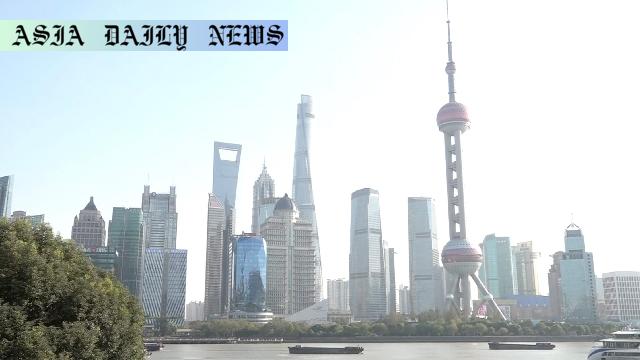Deflation: China’s consumer prices continue their downward trend for the third consecutive month, sparking economic uncertainties.
China’s consumer prices fell 0.1% year-on-year in April for the third month in a row.
The producer price index recorded a significant 2.7% decline, underlining economic stress.
Lower demand for housing and reduced spending on goods contributed to deflation.
China’s central bank has intervened with interest rate cuts to boost the economy.
The government is focusing primarily on domestic demand to counteract the trend.

China’s Deflationary Concerns Persist
China’s economy is grappling with persistent deflationary trends as observed in April, where consumer prices dropped 0.1% year-on-year—a continuation of a three-month streak. The National Bureau of Statistics unveiled this data, which underscores a significant challenge China currently faces: subdued domestic demand. This decline in the Consumer Price Index (CPI) has been influenced by falling prices of key commodities like beef, fresh vegetables, and automobiles. As consumers exercise caution with their spending, businesses are finding it difficult to maintain price stability.
One of the major contributing factors to this deflation is weak activity in the housing market. Saturated by prolonged slowdown, housing sales have led to widespread discounts on home furnishings and related goods like furniture and appliances. These factors combine to amplify price-slashing amid economic stagnation. This trend is a double-edged sword. While lower prices might benefit consumers in the short term, the long-term effects on production and investment are concerning for an economy aiming to sustain its growth trajectory.
Escalating Trade Frictions Add Pressure
Adding to these domestic issues are external pressures stemming from escalating trade tensions with the United States. China and the U.S., two of the world’s largest economies, have been engaged in a tit-for-tat tariff war. Such trade frictions have further impacted China’s manufacturing and exporting sectors, intensifying producer-side price deflations. Producer prices fell by a notable 2.7% compared to last year, signaling production bottlenecks and strained global demand.
To mitigate these concerns, China’s central bank recently announced a cut in its short-term interest rates—a move aimed at easing borrowing costs and stimulating investment. These measures, however, will require time to manifest tangible results. Furthermore, it remains to be seen whether these interventions alone are sufficient to reignite economic drivers while also countering fallout from ongoing trade disputes.
The Road Ahead: Domestic Demand in Focus
Facing these challenges, China’s authorities are increasingly shifting their focus toward boosting domestic consumption. By incentivizing household spending and offering subsidies and support for key industries, they aim to create a ripple effect that lifts the broader economy. Greater emphasis on modernizing infrastructure, digitizing the economy, and improving access to essential services could also spur economic growth.
Despite these strategies, the central concern revolves around whether they can inflate prices sustainably while preserving competitive parity globally. If conditions persist, China’s economic growth estimates for the year might require downward revisions. As consumer restraint and reduced demand in critical industries continue, substantial structural reforms and external stabilization measures could become imperative. Policymakers must harness innovative approaches to stabilize the vital components of China’s economy while avoiding the pitfalls of prolonged deflation.
Commentary
Delving into China’s Deflationary Spiral
China’s recent deflationary trends reflect a multifaceted challenge for the world’s second-largest economy. Often viewed as a global economic powerhouse, China’s persistent price declines for consumer and producer goods raise red flags, not just for the nation itself but also for global markets given its pivotal role in international trade. From the consumer’s perspective, falling prices might seem beneficial in the short term, but the impacts of deflation extend far beyond surface-level advantages, affecting production rates, employment levels, and overall economic confidence.
The Ripple Effects of Declining Prices
One of the notable contributors to this scenario is the hesitancy in spending among Chinese consumers, epitomized by their cautious approach toward large investments such as automobiles and household goods. Weak housing markets have only compounded this issue, leaving manufacturers and retailers in a precarious position. Adding to these woes are external disputes like the ongoing U.S.-China trade tensions, which have added layers of complexity for Chinese exports and manufacturing stability. The steep decline in producer prices showcases the strain even more starkly. When factories and industries are unable to fetch fair prices for their goods, the repercussions on employment and supply sustainability can be profound.
Policy Measures in Question
China’s central bank has taken proactive steps to alleviate pressure through interest rate cuts. While this is a commendable move, the effectiveness of these monetary interventions largely depends on coordinated efforts to boost consumer and industrial confidence. A more vigorous push toward modernization, infrastructure development, and social incentives can potentially steer the economy to a more stable trajectory. However, whether these efforts will suffice remains a looming question. As deflation continues to persist, the situation demands creative solutions and agile policymaking to provide China’s economy with the resilience it urgently needs.


